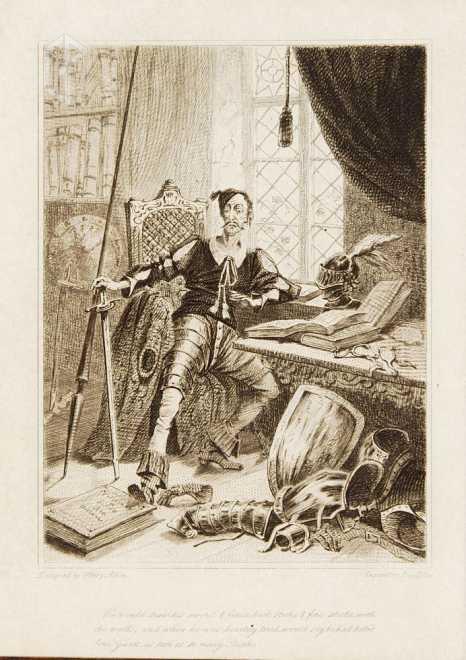
Frontispiece
Beginning of the Romantic image of don Quixote.
Illustration of great pictorial valor; agile and spontaneous engraving.
Used as a frontispiece.
Illustration from the set "Illustrations of Don Quixote: Designed by Henry Alken Engraved by John Zeitter. And Dedicated to the Memory of Cervantes", London: S. H. Hawkins, 1831.
Sir Henry Alken (1785 – 1851): English painter, engraver and acquafortist. Son of artist Samuel Alken, he was specialized in hunting and sporting scenes. In 1801 and 1822 he exposed two portraits at the Royal Academy of London. Alken explores the comic side of riding in a series of prints depicting the follies and foibles of aristocrats on their weekend outings. He worked in London and the provinces and was prolific in a variety of media, including painting, etching and watercolor. Trained as a miniature painter, his works always had a graphic precision. He was employed by sporting periodicals as an illustrator and provided plates for the “National Sports of Great Britain” (London, 1821) (Benezit I, 116).
John or Johann Christian Zeitter (¿? – London, 1862): Genre painter. Between 1824 and 1862 he exposed at London. He was known because of his Polish and Hungarian genre scenes, as “The Hungarian tinkers wedding”. He was a member of the Society of British Artists (1841) (Benezit X, 880).